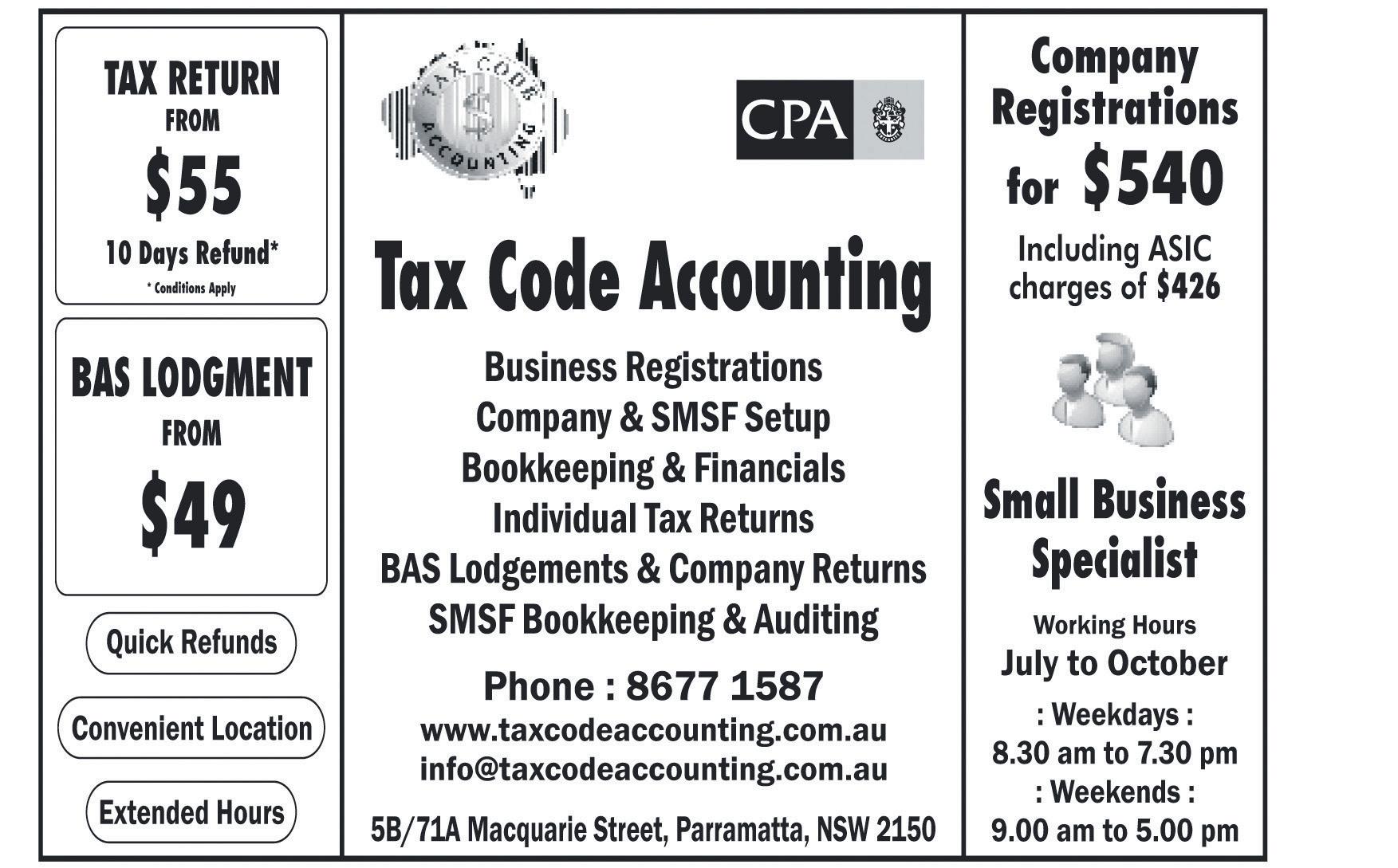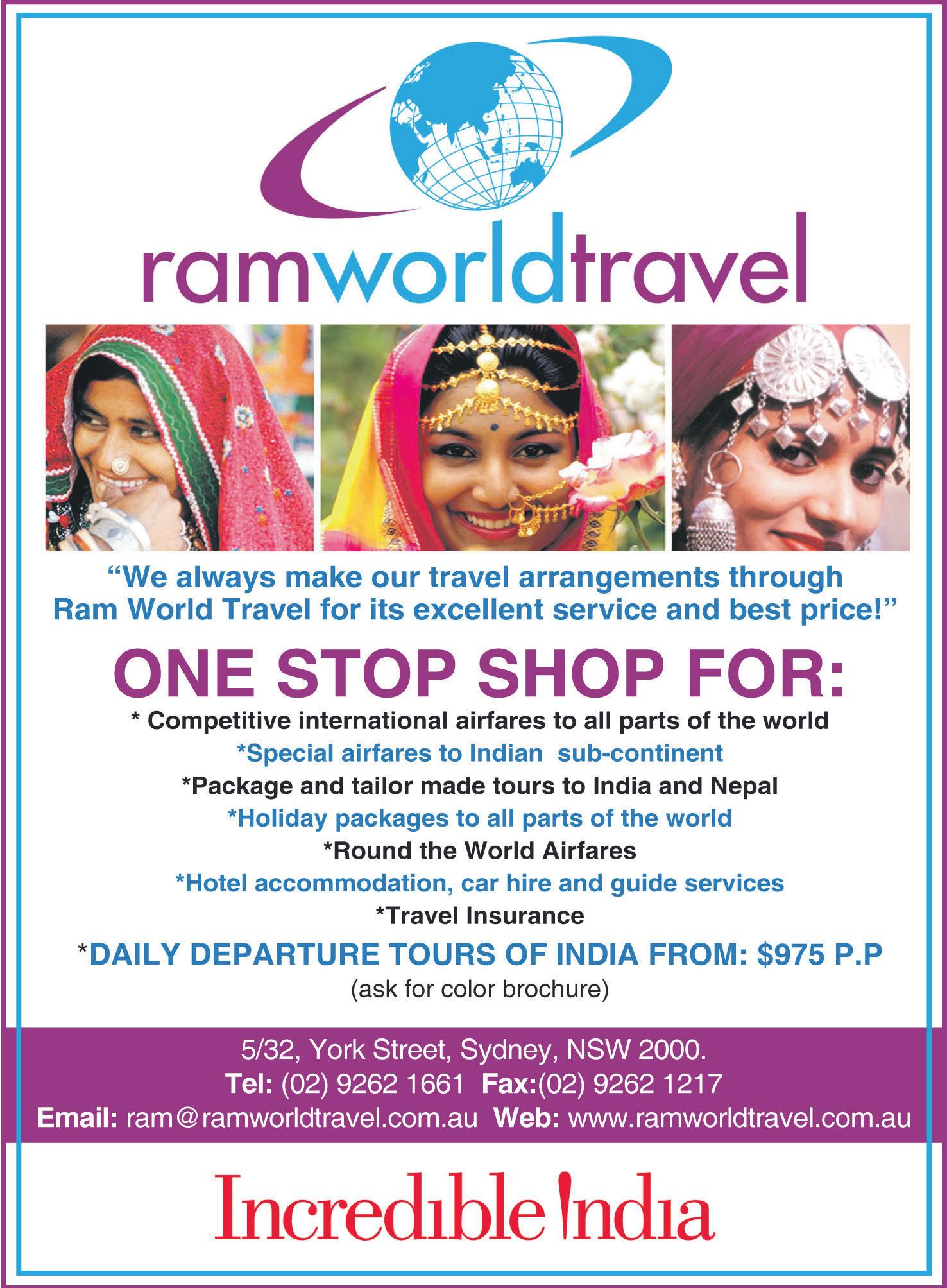
5 minute read
numbers
from 2012-07 Sydney (1)
by Indian Link
arrived since 2000 and highest demographic is in 25-29 age group. The male female ratio is 60:40. 60% were not Australian citizens. More than half the Punjabi households had one child, while 45.6% lived in rented properties. While heterosexual marriage was generally the norm, .1% admitted to same sex relationship and 1.2% were in de facto partnerships.
Bengali
35,645 Bengali speakers in Australia represent .2% of population. NSW suburb of Lakemba recorded highest number (2483). Footscray in Victoria, Forest Lake (QLD), St Marys (SA) and Canningvale in WA topped individual concentrations. Of these 71.9% are from Bangladesh, 9.6 from India. Migration trends have increased phenomenally since 90s. A majority are Muslims and 58% have taken Australian citizenship
Gujarati
15.5% earned over $74,000 annually and 47.8 % owned property on a mortgage. 69.7% were married, 30% were single and .7% in de facto. Hinduism is key religion, while Catholic came second at 10%. Only 2/3rd were not Australian, while over 98% indicated overseas parentage. The main influx of Tamils has been in late 2000s.
Kannada
had the highest intake at 45.7% followed by NSW at 20%. 55.4% enrolled in VET, while 43.7 were in higher education. Significantly these figures show a sharp decline for September 2010, contributed by drop in arrival and increased departures
For 2008-09, there were 324,100 self-reported temporary NOM arrivals who contributed to NOM (see table 3.18). This was 62% of all NOM arrivals with the remainder being permanent arrivals, Australian residents returning and a few from other categories. Of the countries of birth contributing to temporary NOM arrivals, India added the most with 53,900 persons arriving, 60% of India-born arrivals reported education as their main reason for journey, followed by Nepal (59%), and Malaysia (54%).
For those travelling on student visas, people born in India and China were the main contributors to student NOM. Together they contributed around 50% or over for each year between 2004-05 and 2008-09. China was the highest contributor in 2004-05 and 2005-06, at 30% and 26% respectively. People born in India recorded the highest proportion of travellers for the period 200607 to 2008-09, increasing from 29% to 35%. In 2008-09, Indiaborn travellers on student visas contributed 14% of total NOM (up from 6% in 2004-05).
Linguistic demographics
We cast a look here at the language-wise break-up of the Indian community in Australia. The largest linguistic group seems to be Hindi-speaking Indians, followed by Punjabi and then Tamil. But many Indians are multilingual. Speaking to Indian Link at the multicultural briefing, Dr Jill Charker, First Assistant Statistician of the Population, Education and Data Integration Division revealed that there are plans for greater community consultations on the questions which can be asked in the next Census in 2016 which can bring forth more information about the population. For the Indian community, for example, questions which can be put up for consultation can include asking people about the number of languages they speak rather than just a bilingual question.
Hindi
There are 111,351 Hindi speakers (.5%), of which 53% are from India and 29% from Fiji. Most of this demographic arrived since 2000. Of these, the largest concentrations are in Blacktown (NSW) which accounts for 1969, while Point Cook in Victoria, Forest Lake in QLD, Canning Vale (WA) Prospect (SA) have 926, 275, 180 and 113 respectively. The largest demographic is in 25-29 years. 60% have taken Australian citizenship, while 96.8 stated parents born overseas. Hinduism is predominant religion followed by Islam and Sikhism. Most households had 4 people and owned property with a mortgage. .3% acknowledged being in a same sex relationship.
Punjabi
Representing .3% of population, Punjabi speakers total 71,320 across Australia, with Blacktown in NSW accounting for single highest concentration (1894). St Albans came a close second with 1433 Punjabis. WA’s Canningvale, QLD’s Runcorn and SA’s Prospect were other favourites. Predominantly Indian born and of Sikh faith (80.9), most
34,211 Gujarati speakers call Australia home, with NSW suburb Parramatta alone accounting for 1310. Darch in WA, Hawthorn in Victoria, South Australian suburb of Prospect and QLD’s Macgregor were the popular suburbs. 75.8% Gujarati Australians were born in India and 5.4% in Kenya. In the last decade, the number rose from 554 to 1570. Most Gujaratis recorded both parents as born overseas. Majority are not Australian citizens (58.7%), their largest age demographic is 25-28. Most males earned average of $600-800 a week, while most females earned nil. Household income for 18% stood at 78,000-104,000.
Marathi
Marathi Australians numbering 8572 in Australia are predominantly Hindus (90.7%). A three-person household, comprising a couple with one child is the dominant trend, with 46% paying off a mortgage. Nearly 18% households earned more than $74,000. 77% Marathi speakers identified themselves as married. Liverpool (NSW), Glen Waverley (Vic), Nundah (Qld, Mawson Lakes (SA) and WA’s Canningvale have the largest numbers in a suburb
Tamil
With over 50,000 speakers, Tamils form the third highest demographic. Of these 39% are from Sri Lanka, while 35% are from India, and Malaysian Tamils account for 15%. 62% have taken Australian citizenship. Wentworthville in NSW recorded highest number of Tamils (1073), with Glen Waverley (946) coming a close second. Mawson Lakes (SA), WA’s Canningvale and Forest Lake in QLD were popular. Most Tamils had 4 member households, with children under age of 15.
Among the dominant ethnic minorities, Parafield Gardens (SA) and Perth suburb of Maylans were predominant choices. The Kannada community is relatively smaller at 5923. The NSW suburb of Liverpool proved most popular, while Victorian Kannadigas chose Dandenong. In Calamvale in QLD, 91% are Hindus and 84% were born in India. Kannada households typically had 3 people and most families had children under age of 15. 78.3% were registered marriages and .8% in de facto relationship. 17.8% Kannada households had income of $78,000-103,000 annually.
Telugu
Australia is currently home to 18,721 Telugu speakers, most of who were born overseas and half of whom live in rented premises. Westmead in NSW (729), Footscray in Victoria (280), Kenmore (Qld), Mawson Lakes in SA (44), Maylands in WA (60) have largest numbers respectively in one suburb. 58% of the linguistic minority is yet to opt for citizenship and 98.25 have both parents born overseas. Hinduism is the dominant religion. 15% males earned above $74,000 while 34% of females had no income. Single child is the dominant trend.
Malayalam
25,111 is the current number of Malayali speakers across Australia. Dandenong in Victoria (425) and Westmead in Victoria (253) have the highest concentration state-wise, while Annerley in Queensland, Woodville Gardens in South Australia and WA’s Canningvale (193) registered the largest numbers. The largest age demographic for male Malayalam speakers was 30-34 years (16.9%). Since 2000, their numbers have increased from a meagre 246 to 2809, nationwide. 65% are yet to opt for citizenship. Catholicism is the predominant religion, cornering a sizeable 47% of the demographic. Other faiths include Syrian Orthodox, Pentecostal and Anglican besides Hinduism, of course. 80% are in a traditional marriage, with the average Malayali household having two children. A sizeable 43% live in rented homes, with those having mortgage coming close second at 39%. The largest age demographic is 30-34 years.
For more details, visit www.abs.gov.au
A neAr neW InDIAn reSTAUrAnT & CAFe For SALe
Located in a small shopping village in residential area in Lower North shore. This profitable restaurant has
Brand New Fit-out. RENT ALMOST 30% LESS THAN MARKET RATE. Long Lease. 70-75 seats.
Easy to manage. Unlimited 457 work visa approvals.
Operating as Cafe in the morning and Fine Indian restaurant in the Evening.
Contact Saurabh on 0430113695 or saurabhrajbehl@gmail.com










